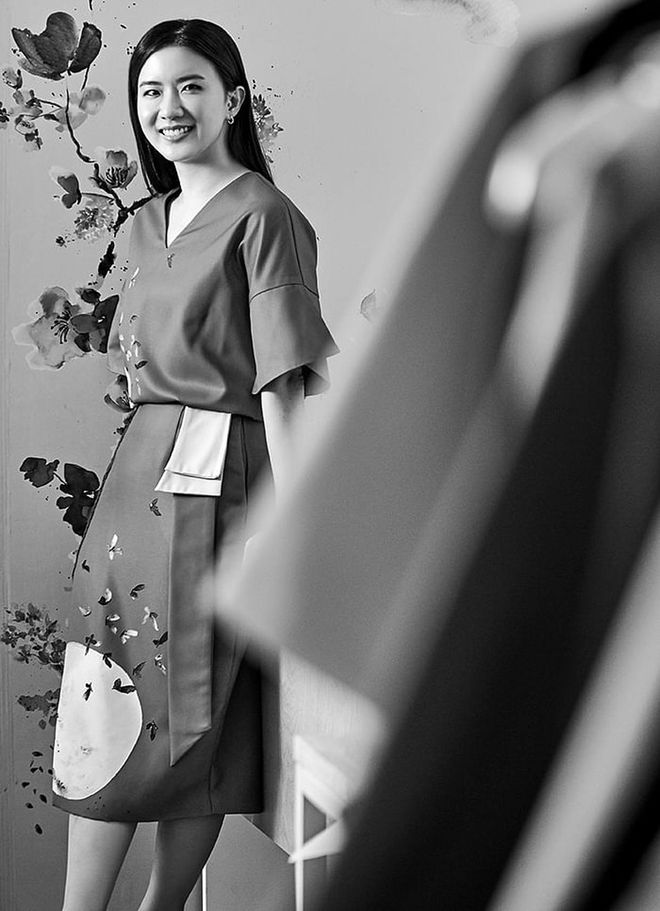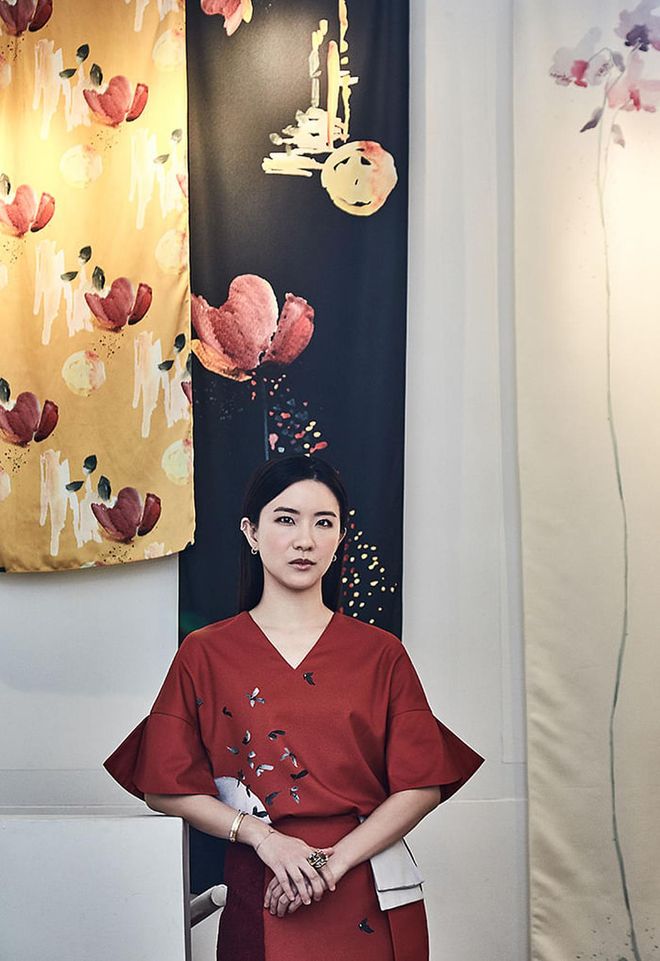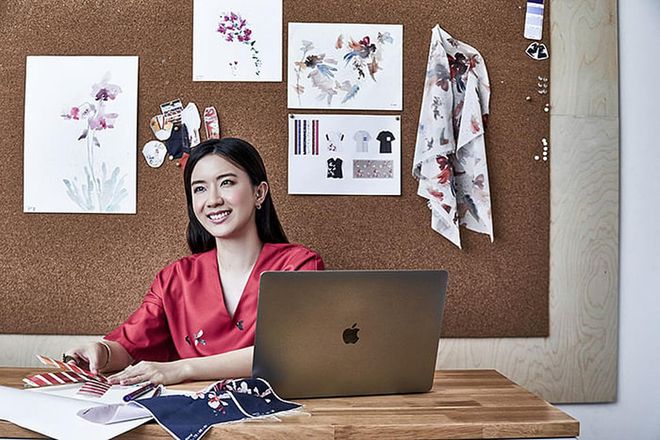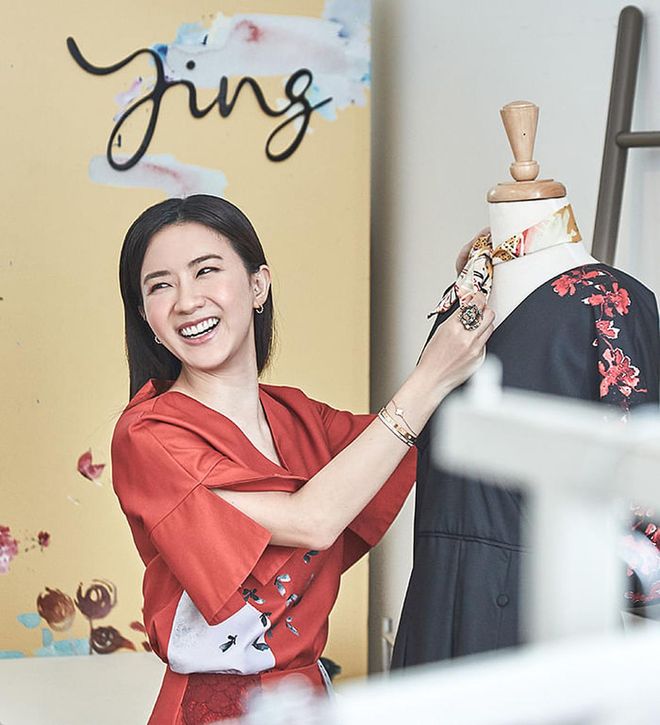Fashioning the Future: Phuay Li Ying On Forging Creative Collaborations
She wants her brand, Ying the Label, to spark conversations and foster new connections
Phuay Li Ying, founder of Ying The Label, uses fabric as a medium to showcase her artwork. Which explains why designs by this ex-banker-turned-fashion designer are rich with print that has been hand-painted by her, digitally rendered on fabric, and made into apparel and accessories. Here, she speaks to us about the business of fashion and the challenges that local designers face.

Photo: Darren Chang
Fashioning the Future: Phuay Li Ying On Forging Creative Collaborations
Why does fashion matter?
Fashion is an extension of one’s identity. I think of it as a form of expressing one’s individuality through stylistic choices—be it minimal and comfortable, bright and bold, or avant garde. In other words, it reflects who you are.
What prompted your decision to go into fashion retail?
Working in the banking sector for a couple of years made me realise that the corporate world was not for me, because I love being creative. So I decided to join a now defunct luxury fashion e-commerce site, where I was able to be creative and learn about the business side of fashion as well. I was there for about a year and half before I decided to take the plunge and launch Ying The Label. However, I am all about balance so I still have my corporate day job as deputy director of corporate development at Excelpoint Systems.
How did you integrate your love for art with fashion?
Art has been a great interest of mine since I was about five years old, whereas I only discovered my passion for fashion when I studied at Monash University in Melbourne. It was during my six-month fashion design course at LASALLE College of the Arts that I discovered the intersections between fashion and art. I was always working on finding new mediums to put my art on. I used to experiment with acrylic and wood to create jewellery, but I ultimately decided on using textiles. The idea of bringing my paintings to life through digital printing really appealed to me. From saturating the watercolours to manipulating the tints, I was able to really achieve what I had envisioned with fabrics - more than any other material. Textiles became my canvas and that is what sets me apart from other labels. All of the art you see on my clothes are hand-painted by me, which has to then go through print manipulation and placement before they are turned into the fabrics that I use to create garments.
Related article: Fashioning The Future: Nadya Wang On Shaping The Minds Of The Next Generation

Photo: Darren Chang
Fashioning the Future: Phuay Li Ying On Forging Creative Collaborations
Tell us about your creative process.
I find inspiration everywhere—when I am driving, during my travels, even my own emotions. I also sometimes get inspired by galleries I have visited, and conversations I've had with people; especially when they're about social causes. At the end of the day, I want my clothes to tell a story—be it about the person wearing it or about the art printed onto the fabric. Essentially, I want to start conversations through my designs. Many of these conversations have led to collaborations. With DBS, for instance, they approached me to design a set of uniforms for their staff that would convey modernity, strength and boldness while being gender neutral. Sometimes floral digital prints may be perceived as too feminine, and we wanted something their staff would be comfortable wearing regardless of their gender. With that in mind, I tried a couple of different brush stroke techniques before we both decided on bold strokes, which were neither too feminine nor masculine. Since designing the uniforms were such a success, we further collaborated on creating a DBS capsule collection .
Another collaboration which I thought was successful was the one I did with veteran Singaporean fashion designer Thomas Wee last year. Being able to work on a collection with him was such an amazing experience. He was able to breathe new life into my designs without compromising on either one of our aesthetics, which I found quite refreshing. It took about six months, starting with conversations on my paintings, the colour scheme as well as the silhouettes. I enjoyed the entire process, which I think comes through in the collection because I still have customers telling me how much they love it.

Photo: Darren Chang
Fashioning the Future: Phuay Li Ying On Forging Creative Collaborations
The great thing about collaborations is that many of my partners end up becoming my friends or mentors, such as Winnie Chan, CEO of Bynd Artisans and James Quan, her husband and business partner.
Another aspect of my business is customisation, which I offer as a way to collaborate with my customers. We’ve just launched our newly minted website, featuring a customisation tab which allows our customers to pick a print or background colour they’d like to be made into our shift dress - something we’ve spent years perfecting to ensure that it’ll be flattering on as many body shapes and sizes as possible. We also accept one-on-one appointments at our atelier to talk them through the process so that they’re 100% satisfied with their purchase. We also do made-to-order dresses.
Related article: Fashioning The Future: Natsuko Teruya On The Art Of Image-making

Photo: Darren Chang
Fashioning the Future: Phuay Li Ying On Forging Creative Collaborations
What qualities or skills do you need to work in fashion retail?
Striking a balance between creative expression and commercialisation is essential, so is having a sound business plan. Otherwise, your ideas will remain as they are—concepts. As the Singapore market is very small, you need to be able to find the target market and cater to them. Last but not least, you need to have a strong passion for it because fashion is a tough business.
What are the global trends of shifts that will make an impact on the fashion industry?
I think the biggest shift making an impact on the fashion industry currently is the COVID-19 pandemic. It has affected the stakeholders in the supply chain such as fabric factories, printers and manufacturers, severely affecting production, resulting in forced cancellations of many events and collection launches. Given that Singaporeans are generally more pragmatic in their purchasing decisions, fashion is not high up on their list. In the long run, I do think that local fashion businesses will be taking a hard hit. I take it as a challenge to rethink our business model and come up with new ways to engage with customers.

Photo: Darren Chang
Fashioning the Future: Phuay Li Ying On Forging Creative Collaborations
What are your hopes for fashion in Singapore?
What makes us unique is our diverse cultures, and I believe that interpreting that via the lenses of contemporary fashion will set us apart from Western designers. My hope is that one day, a Singaporean designer will become a global star because of it—that would be amazing.
Related article: Penelope Cruz On Hollywood, Her Collaboration With Atelier Swarovski And More

Photo: Darren Chang
Fashioning the Future: Phuay Li Ying On Forging Creative Collaborations
Location: Ying The Label Atelier
Hair & Makeup: Greg’O
Producer: Navin Pillay
Fashioning the Future is a four-part series where we speak to four women in the fields of education, design and photography to find out how in their respective disciplines, they are contributing to shaping the fashion landscape in Singapore.